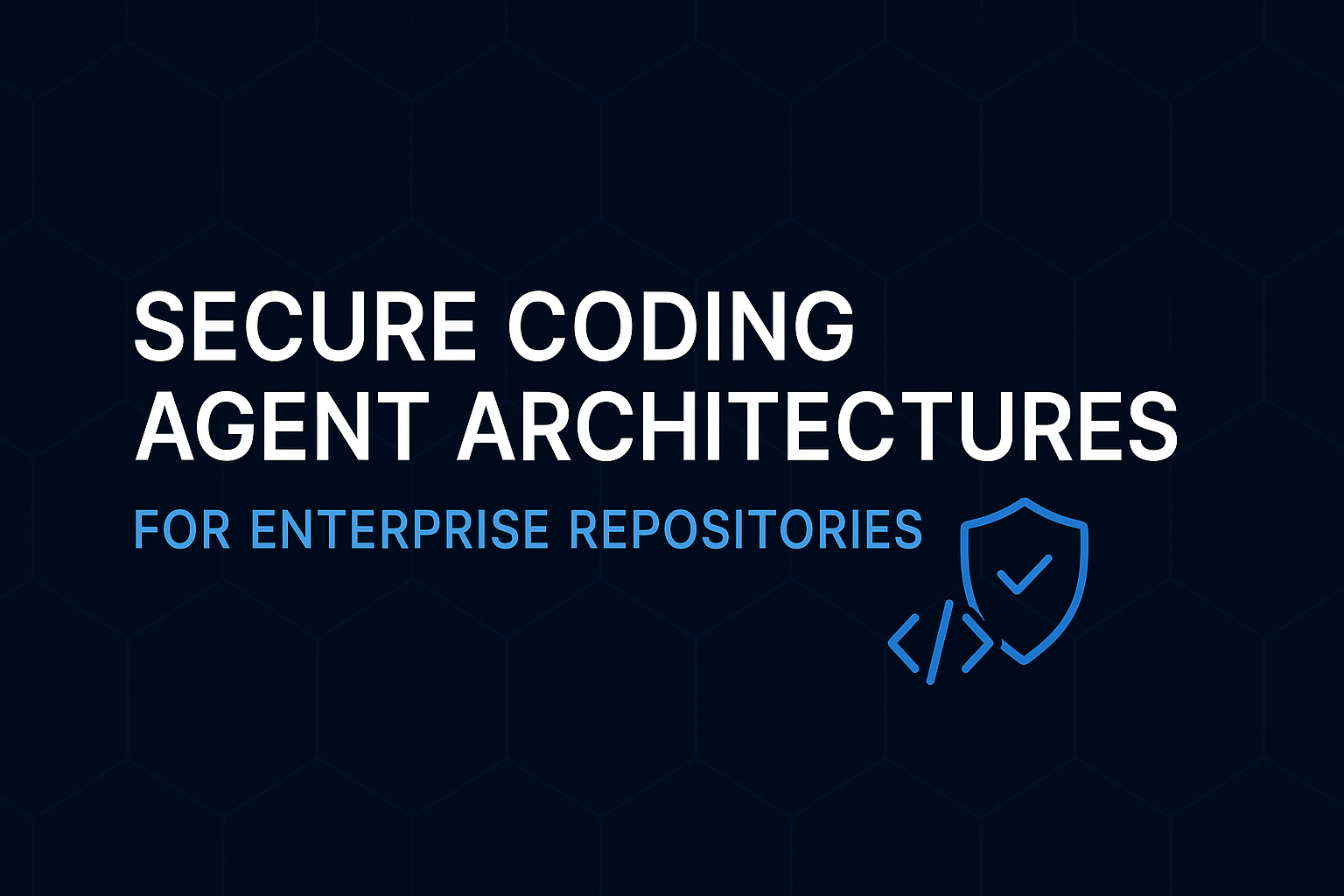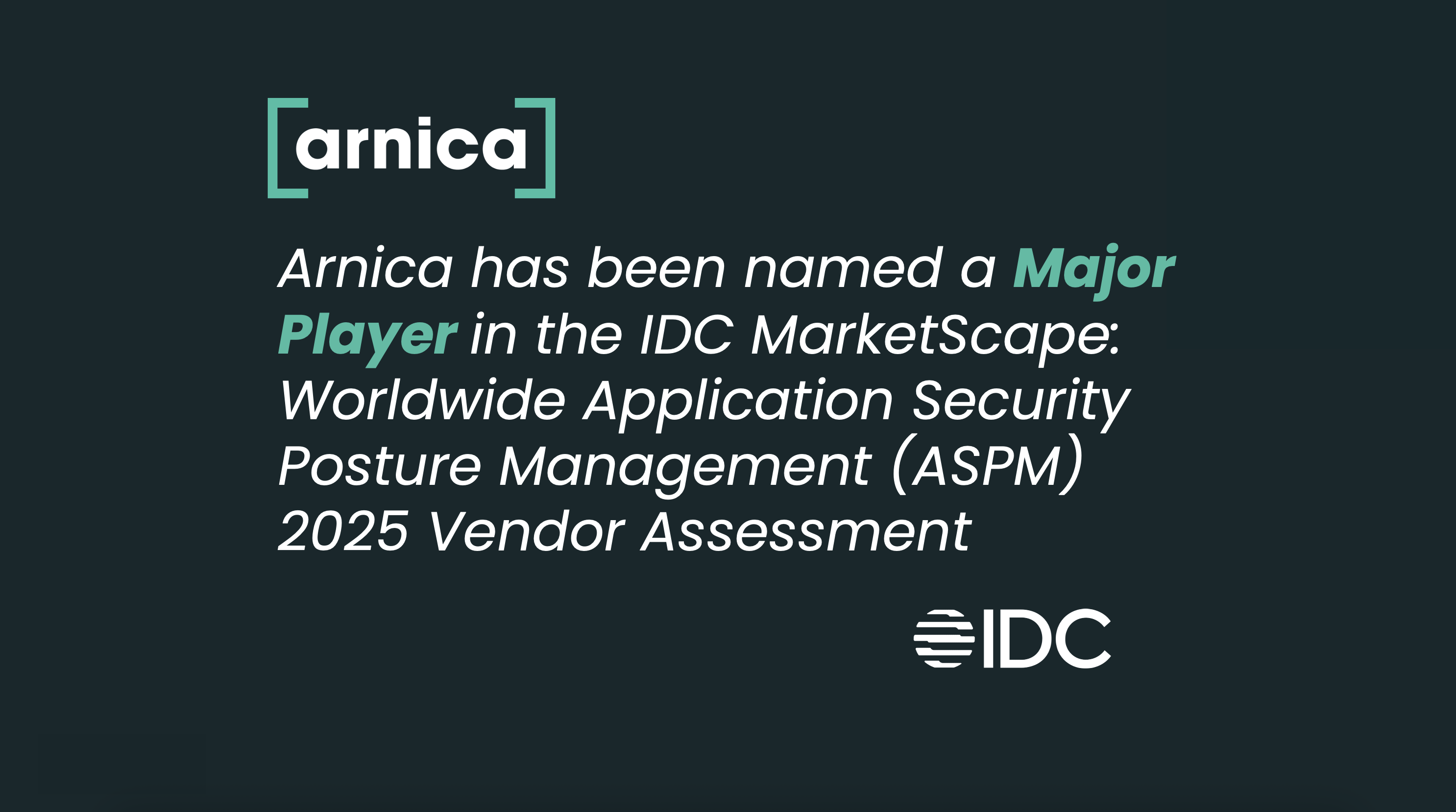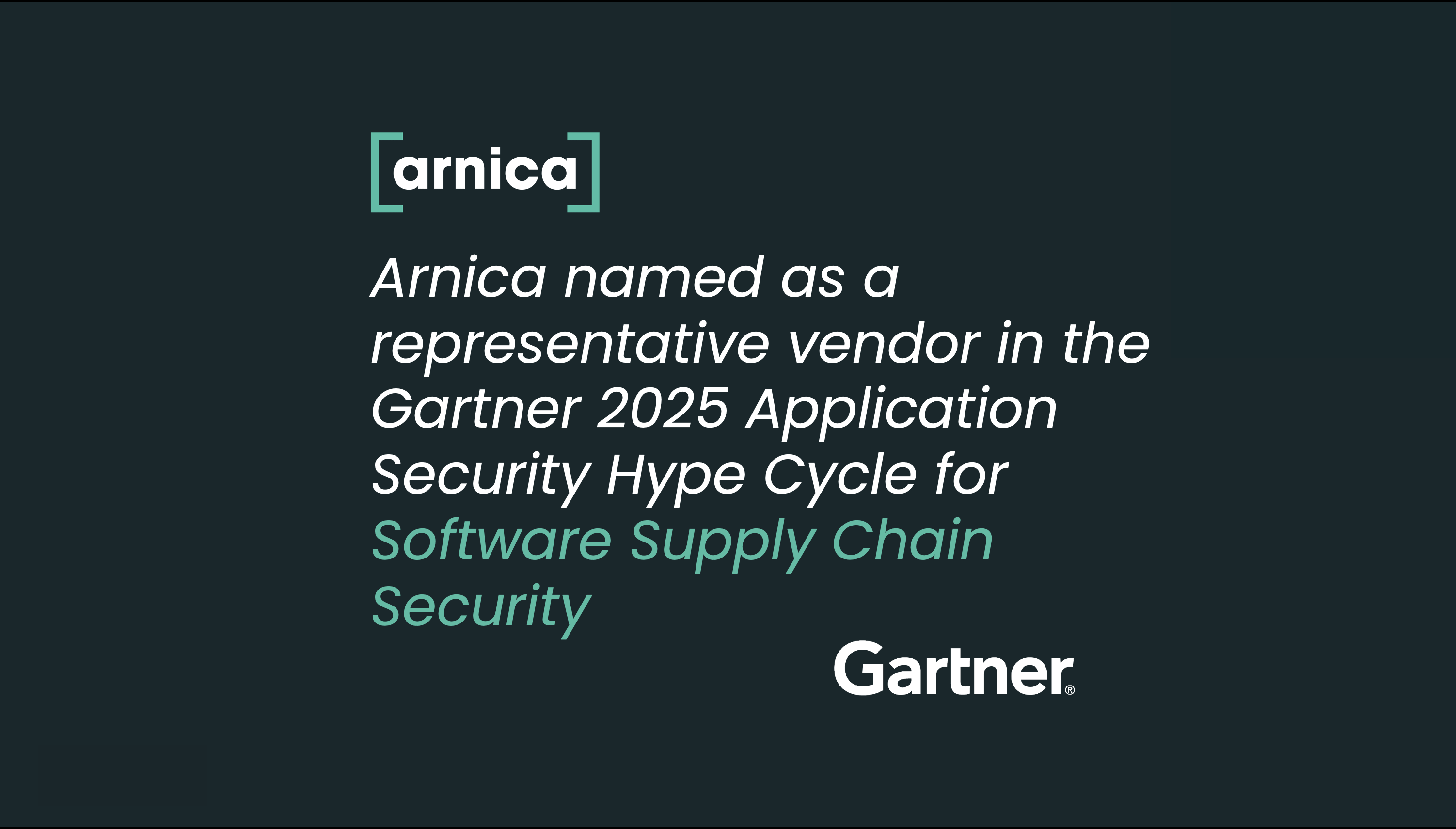AI coding assistants now generate a significant portion of enterprise code and will soon account for most new code. While they accelerate delivery and unlock developer productivity, the security burden scales just as fast — and without new approaches, AppSec teams cannot keep up. Traditional models of manual review or downstream scanning simply cannot match the speed of agentic development.
The promise is clear. Development teams gain speed, reduce repetitive work, and unlock new efficiency. Yet these gains come with serious risks. Agents may inadvertently generate insecure code, expose secrets, or pull in unverified dependencies. In enterprise repositories that manage intellectual property, compliance-bound data, and mission-critical applications, these risks are unacceptable.
This is where Secure Agentic Architectures come in. More than design patterns, they represent a new framework for governing AI-driven development. Secure agentic architectures embed guardrails at generation, on push, in pull requests, and even across backlogs — ensuring that AI-driven code is created, validated, and remediated against enterprise security standards. Arnica’s Arnie, the industry’s first agentic rules enforcer and AI-native SAST suite, brings this framework to life.
The Expanding Role of Coding Agents in Enterprise Development
Modern coding agents are far more capable than simple autocomplete systems. They can generate complete APIs, automate test creation, propose optimizations, and even create infrastructure-as-code templates. Agents can scan repositories for vulnerabilities, apply suggested patches, and interact with CI/CD pipelines to accelerate deployment cycles.
This depth of capability turns them into semi-autonomous actors. They no longer just suggest lines of code; they make decisions that influence the security posture of an enterprise repository. Without the right architecture, the same speed that improves productivity can accelerate the spread of vulnerabilities.
Challenges in Securing Enterprise Repositories with Coding Agents
The risks of agentic development map directly to the gaps Arnica was built to fill. Each challenge highlights why traditional approaches fall short and why pipeline-less, agent-native security is required:
- Insecure Code Generation – AI assistants often reproduce flawed coding patterns, from unsafe cryptographic functions to unchecked inputs. Arnie addresses this with AI SAST, using multi-agent detection and context-aware fixes to validate code as it is generated, not after it has already landed in the repository.
- Supply Chain Risk – Agents frequently pull in open-source libraries without validating their safety. Arnica mitigates this risk with automated SBOM generation and package reputation scoring, ensuring every dependency is tracked, analyzed, and verified before integration.
- Secret Leakage – One of the most common real-world breach vectors is the accidental exposure of API keys or credentials. Arnie prevents this through pipeline-less secret detection and real-time remediation, stopping sensitive data from ever being committed.
- Compliance Burden – Enterprises in regulated industries cannot rely on manual audits to catch AI-driven issues. Arnica enforces version-controlled guardrails and continuous compliance checks, ensuring that every agent contribution aligns with enterprise policies and regulatory frameworks.
- Over-Broad Access – Many organizations grant coding agents excessive permissions, risking unreviewed or unauthorized code pushes. Arnica secures this with identity mapping and developer attribution, ensuring agents only act within approved scopes while maintaining accountability.
By directly addressing these challenges, Arnie transforms AI-driven development from a security bottleneck into a trusted driver of productivity.
Core Principles of Secure Coding Agent Architectures
The core principles of secure coding agent architectures are best understood as layers of enforcement that protect code from the moment it is generated to long after it lives in enterprise repositories. Instead of relying on downstream CI/CD gates, these guardrails are embedded directly into developer workflows and coding agents through Arnica’s Arnie.
- At Generation – Arnie injects organizational rules directly into coding agents through Agentic Rules Enforcement. This ensures AI-generated code adheres to enterprise security policies as it is written, blocking insecure patterns such as unsafe cryptographic functions, unchecked inputs, or known vulnerable dependencies before they ever leave the IDE.
- On Push – Every commit is validated with real-time scanning and AI-assisted fixes, combining static application security testing (AI SAST), software composition analysis (SCA), and secret detection. This prevents vulnerable packages, misconfigurations, or leaked credentials from entering repositories, closing one of the most common breach vectors in enterprise environments.
- On Pull Request – Policy-as-code guardrails enforce standards before merges. High-risk changes require human approval, while low- to medium-risk issues are remediated automatically. This ensures repositories remain compliant with regulatory requirements and enterprise security frameworks without slowing developer velocity.
- In Backlog – Arnie performs retroactive scans, ownership mapping, and automated remediation across existing codebases. Vulnerabilities in long-lived repositories are surfaced with developer attribution, making it clear who can resolve them and enabling fast fixes at scale.
By embedding these guardrails throughout the coding lifecycle, enterprises achieve pipeline-less, developer-native security that keeps pace with agentic development. These principles ensure that coding agents accelerate innovation while staying within enterprise-grade security boundaries, transforming Zero-Trust from a concept into a daily operational reality.
Building Blocks of Secure Coding Agent Architectures
Secure architectures rest on several building blocks. The first is the identity and access layer. Each agent must be integrated into the enterprise IAM framework, aligned with cloud service integration policies, and compatible with multi-cloud security strategies.
The second building block is repository health monitoring. Continuous monitoring ensures that repositories are not only free of vulnerabilities but also compliant with security standards. Tools like Codacy, Checkmarx, and native GitHub security features can help maintain repository integrity and validate agent contributions.
The third is alignment with the secure development lifecycle (SDL). Agent contributions should map directly to SDL checkpoints, ensuring design reviews, security scans, and compliance checks are applied to all agent-driven changes. This creates a consistent standard of oversight.
The fourth is pipelineless security. Not all code passes through formal pipelines. By embedding guardrails at the IDE or agent level, enterprises can block insecure actions before they reach the repository. This ensures early-stage security for both human and AI contributions.
The fifth is secret and credential protection. Agents must only operate with temporary credentials. Long-lived keys must be eliminated, and if a secret is exposed, remediation should rotate it automatically. This prevents credential exposure from becoming a long-term breach.
Integrating Agents into DevSecOps
A secure architecture for coding agents cannot exist in isolation. It must be part of the broader DevSecOps tools ecosystem. This means embedding application security into the entire pipeline, maintaining visibility into agent activity across repositories, and automating compliance reporting.
By integrating agents into DevSecOps practices, organizations achieve two key outcomes. First, they maintain development speed by embedding security transparently into workflows. Second, they create alignment between development, security, and operations teams, ensuring agents enhance security rather than compromise it.
The Future of Secure Coding Agent Architectures
As adoption grows, coding agents will not just assist developers but also defend repositories. Future secure architectures will include self-healing repositories where agents detect and remediate vulnerabilities automatically, adaptive access management where agent privileges change based on context, and predictive remediation that blocks issues before they are introduced.
Compliance will also become more proactive. Agents will align with security compliance audits and ensure that code remains compliant as regulations evolve. Enterprises will no longer wait for annual audits but will maintain compliance continuously through agent-driven oversight.
The long-term vision is for coding agents to become trusted partners that accelerate innovation while embedding resilience into every repository. This will only be possible with architectures designed from the ground up for enterprise-grade security.
Conclusion: Turning Coding Agents into Security Allies
Agentic coding is not a passing trend — it is shaping the future of enterprise software. The question is no longer whether organizations will adopt coding agents, but how they will secure them. Without the right safeguards, the same speed that accelerates delivery can also amplify vulnerabilities.
Secure agentic architectures provide the answer. By embedding guardrails at every stage of the coding lifecycle, they turn AI from a potential liability into a proactive defender of enterprise repositories. With Arnie, enterprises gain developer-native, pipeline-less security that operates at agent speed. This means developers can move fast, AppSec teams can scale without bottlenecks, and organizations can embrace the agentic era with confidence; knowing productivity and enterprise-grade resilience grow together.
At Arnica, we help organizations design and implement secure coding agent frameworks that balance speed with resilience. From automated security workflows and pipelineless security solutions to real-time security alerts, our platform empowers enterprises to harness coding agents safely and effectively. Learn more at arnica.io.
Reduce Risk and Accelerate Velocity
Integrate Arnica ChatOps with your development workflow to eliminate risks before they ever reach production.




